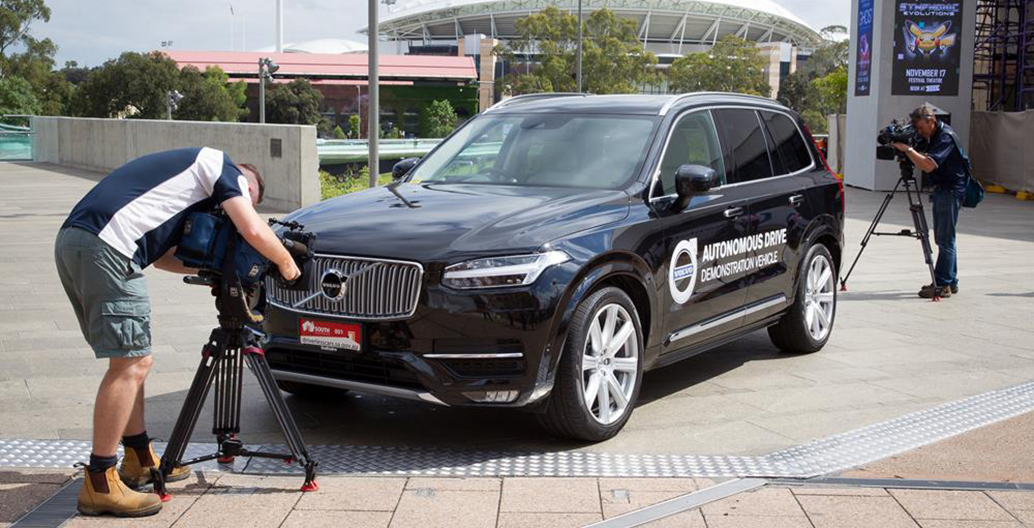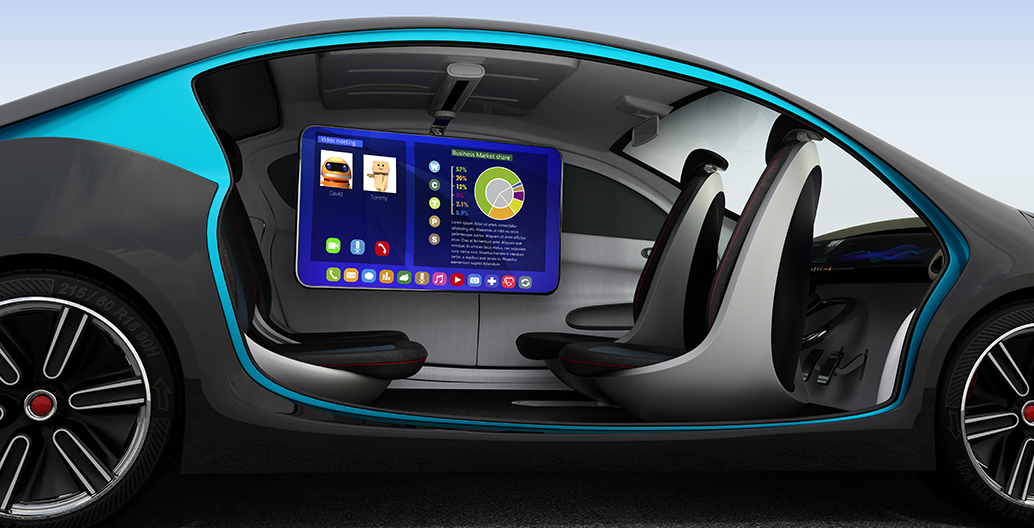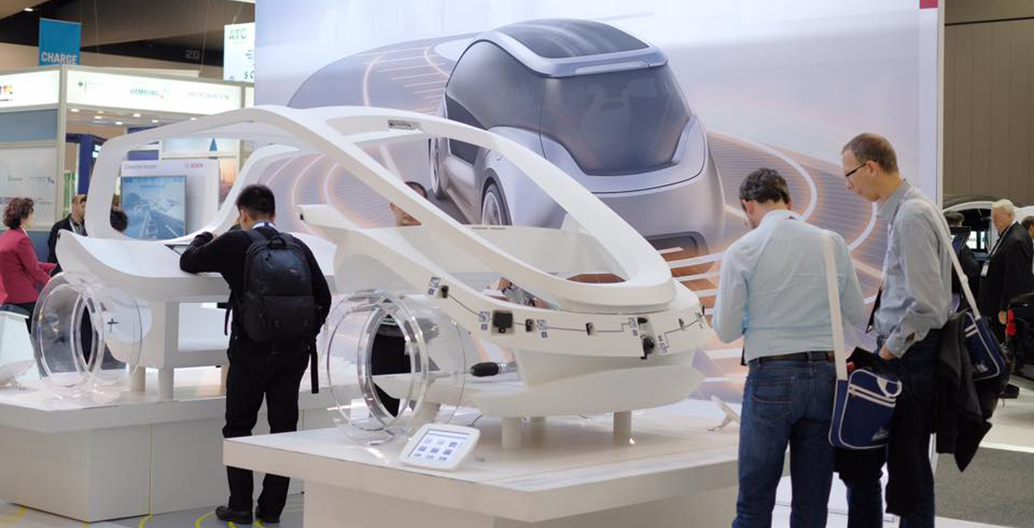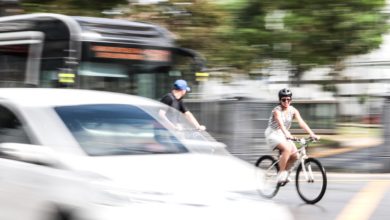
Are we there yet? Part 1: What smart mobility and the autonomous car mean for streets
Foreground explores what future mobility might mean for our cities in a two-part series. In part one, we examine big business’s radical plans to reinvent the private car.
Some say it will reduce traffic and make us safer, others say exactly the opposite – yet all sides of the discussion seemingly agree that the autonomous car will revolutionise the automotive industry. At the core of this revolution lies a global automotive industry conservatively worth US$3.5 trillion per year.
Not surprisingly, then, the race to get to market has created a super-heated commercial war between technology titans, to see who can best capitalize on a whole new category of high-grade consumer product. But beyond the razzmatazz of a new breed of performance autonomous cars, plush private interiors and smiling young executives, serious questions remain unanswered.
Before getting into the gnarly detail, let’s remind ourselves of the big picture, because autonomous cars represent more than an incremental shift in car technology. They represent the beginning of a whole new lucrative world of customer servicing, with driverless cars delivering up tens of millions of docile strapped in passengers looking for something to do. Remember when mobile phones were born? We thought of them as basically a phone, with the freedom to roam. Now, as the cliché goes, we occasionally use it to talk to someone – in between checking our feeds, the pollen count, our appointments and our heartbeat.
The same paradigm shift looks set to transform the car, essentially into a giant media device on wheels. Because you won’t be gazing out the window as you glide through the city blissfully unaware of the lane closure ahead. You’ll be watching YouTube, listening to iTunes radio, shopping at Amazon and being ad-served back your retail preferences on social media. A recent McKinsey report estimates “on-demand mobility services and data-driven services” will add a whooping thirty percent to total automotive revenue by 2020. Or US$1.5 trillion dollars, if you want to get picky.

From couch potato to car potato – imagined interior of an autonomous vehicle.

Brands like Bosch are likely to compete with the big automotive manufacturers.
Just look at the bandwagon of corporations that are investing in this area, part of what urban designer Dan Hill calls the “Urban Intelligence Industrial Complex”. The full list would run off the page, but it includes the likes of Apple and Audi, General Electric and Google, Mercedes-Benz and Microsoft. That’s just a handful of the companies involved in developing this new generation of car, each with an annual turnover over US$10 billion.
Beyond direct automotive interests, the global upgrading of streets and highways needed to enable this revolution is attracting a large pool of private interests, from civil infrastructure and energy corporations to telecommunications and data servers. Autonomous cars are likely to require complete “system updates” for our streets.
But, as Apple has shown us with ruthless discipline, updating technology might promise greater consumer choice, but invariably leads to accelerated redundancy. Good for business, not good for the environment. If you apply the iPhone’s churn-and-burn upgrade business model to a world producing over 100 million cars a year, that’s a whole new era in wasted embodied energy and potentially an accelerated profit model for the big manufacturers. Given the money involved, it’s hard not think of autonomous cars as a racing (but precisely within the highway speed limit) inevitability.
But let’s leave aside the money for a moment. Let’s also leave aside the technical challenges. Let’s imagine that the cameras, radar and LiDAR all operate perfectly on a dark rainy night driving around Piccadilly Circus, or down a subzero snow-banked Nordic lane, in a Dubai dust storm that threatens to bury the road, or on the millions and millions of kilometres of roads that have no signage, no curbs, no bitumen and no street lights.
Let’s suppose the cyber fairies achieve what the CIA and MI5 never have, and solve the problems that Apple and Google never could, to deliver unhackable software that will never be hijacked, ransomed, customised into a mid-sized family nail-bomb, or made to drive Donald Trump into a wall. Let’s imagine we can solve the technical problems (or, more likely, minimise malware vulnerability to acceptable levels), and instead look only at the ethics. Let’s not look at what we can do, but what we should do. Because in some ways, the autonomous car is a prime case study in what political philosopher Michael J. Sandel has coined “the moral limits of markets”.
Soft targets: the ethics of autonomous cars
There is no greater ethical dilemma for the autonomous car than the manner in which it deals with life-or-death decisions. Autonomous car advocates will point to how humans suck at driving: how we drive half-drunk, or half-asleep, or while texting. Machines are 24/7 happy nominated drivers. Think of the lives we’ll save. But cars crash. They will always crash.
To the extent that cars crash, this raises the question of what a driver could have, or should have, done. When making a split-second decision, do I hit the car in front, or veer off the road into a fence? Skidding in ice and unable to stop, do I aim for the wall or the group of kids next to the wall? An easy choice perhaps, for you or me, but based on what ethical parameters would an autonomous car make that decision? This question may be exercising technologists and philosophers alike, but it hasn’t much taxed the ethical minds of politicians, who have largely assumed the role of spectators, as commercial interests make up their own mind.
Recently Mercedes-Benz did just that. After extensive deliberation on the ethics of the crash, Mercedes basically said, kids are soft and walls are hard. Put simply, the computer’s priority in the case of an imminent accident, will be to minimise the risk for the driver, above all else. In cold hard terms it means that when the car’s artificial intelligence (AI) weighs up who to protect – the guy in the big metal safety cage, or the three kids sitting playing Minecraft next to a brick wall – the computer will plough an out-of-control car into the soft children, rather than hit the hard wall. It’s hard to write those words, let alone deliberately write the code and load it into your car’s intelligence. But that’s what happens when the world’s richest corporations decide what is in their best interests and the interests of their customers, while government stands around waiting to be told. Though they probably won’t be told, as the autonomous car’s AI will likely be undisclosed, as commercially confidential.
Reinstalling our streets
Moving away from the ethics of collateral damage, there are other complex policy questions to be considered. If road networks need upgrading for these cars to function properly, who’ll pay for that? The owners of the performance cars that appear to be first to market, or the public? Is it possible that tax dollars unspent on health and education will be ploughed into road upgrades that seem likely to only benefit a small percentage of citizens in the short to medium term? Remember, every dollar spent on refitting our streets for autonomous cars, will likely be a dollar less spent on already underfunded public transport.
Then there’s the urban and civic question of whether we even want last century’s regime of lanes, speed and intersection control, which has so comprehensively prioritised cars over pedestrians. Can we not use our new smarts to rethink who owns the street?
That rethinking has already begun thanks to the late Dutch traffic engineer Hans Monderman, who introduced the world to the concept of Shared Space. The idea is simple: remove traffic lights, lane markers, speed limits, crosswalks and curbs. Make pedestrians, motorists, and cyclists negotiate streets through interaction with one another. Chaotic as it sounds, Shared Space actually reduced the rate of major accidents drastically.
This experiment essentially reset the balance between pedestrians, cyclists and cars, and moved away from regulated to negotiated behaviour. It put decision-making back in the hands of citizens and made them responsible. Yet much of the autonomous car literature discusses Vehicle-to-Vehicle communications (cars talking to cars) and Vehicle-to-Infrastructure communications (cars talking to traffic lights and sensors etc), while there is very little discussion about vehicle-to-pedestrian communications, perhaps because human brains aren’t yet WiFi enabled.
Doubling down on rush-hour: autonomous cars and congestion
Some researchers considering the impact of autonomous cars on congestion are actually concerned they might make matters worse. Elliot Fishman from the Institute for Sensible Transport actually calls the autonomous car “a double-edged sword”, for while it might make a commuter’s journey more comfortable, that very fact could drive commuters off busy trains and back on the roads. The success of autonomous cars may fail our streets, as people are incentivised to get back into their cars.
In response to such concerns, autonomous car advocates cite better traffic flow, largely due to reduced headway (the space between cars), thanks to all that onboard mobile tech. Vehicle-to-vehicle communications could provide near instant communications between cars, now moving like a massive, finely-tuned shoal of herrings. It is also claimed that vehicle-to-vehicle communications will reduce delays at signalized intersections. All good stuff, but surely such efficiencies are predicated on one hundred percent autonomous cars on the road? How could we possibly manage the integration of two-speed highways? Can old-school humans in their manual utes, with barely a functioning side mirror and dull reflexes, share the same highway as smart new vehicle-to-vehicle robotic computers, acting with lightning-fast response times? Is such a hybrid condition not a recipe for disaster?
Another traffic scenario that concerns Fishman, also commented on by Sara Stace in her recent article for Foreground, relates to autonomous car commuters who drive into their CBD office and instead of parking the car next door for $50, will send it back home. An hour before the end of the day, they will then beckon it back. Net result: a double rush hour.
Fishman believes that these congestion risks are so great that we need to think about charging road users by the kilometre (otherwise known as road user pricing), because “without road user pricing, any potential benefits of driverless vehicles may be eroded by a significant increase in congestion” (not by coincidence, such a regime could neatly offset lost tax revenue from the decline in petrol usage, as a steep increase in electric cars is also predicted).
Yet as the Grattan Institute’s City Limits report from 2015 identifies, one of the most entrenched challenges for transport equity in our capital cities relates to the fact that lower income workers have no choice but to live far from where the jobs are. They therefore have to travel further, often from places with poor public transport, to get to work. Road user pricing would therefore likely be a new national road tax that would disproportionately hurt those earning the least, while hardly impacting those autonomous car commuters in the middle suburbs, who could continue to fetch their autonomous cars at minimal cost, despite being the best served by public transport.
Many important questions remain unanswered regarding the impact of autonomous cars on cities and our urban economies. Meanwhile, however, a US$3.5 trillion dollar car industry presumes to have the answers. In focusing primarily on the autonomous car in part one of this report, we have admittedly focussed more on its possible downsides rather than upsides. This is for the simple reason that the upsides are so relentlessly and seductively promoted, by both the vendors hoping to drive new business, and utopian technologists who believe Cisco Systems can save the world.
The question here is not whether smart technology can help win the war against congestion and unhealthy cities. Of course it can. It’s a question of differentiating between importantly different solutions. On the one hand, there’s a solution brought to you by radars, lasers and bleeding-edge cybernetics, all served by a cybernetic control centre. On the other hand, there’s a solution brought to you by one of today’s most widely available smart technology tools, linked to a diverse ecology of cloud-based digital services. Because when it comes to community and the environmental benefits of smart technology, nothing comes close to a smartphone, loaded up with the right apps and informed by the right urban sensors – all which we will explore in part two.
Foreground is a media partner with Streets 2.0, where smart mobility will be part of a discussion on the future of the street.
Click here for more details.


